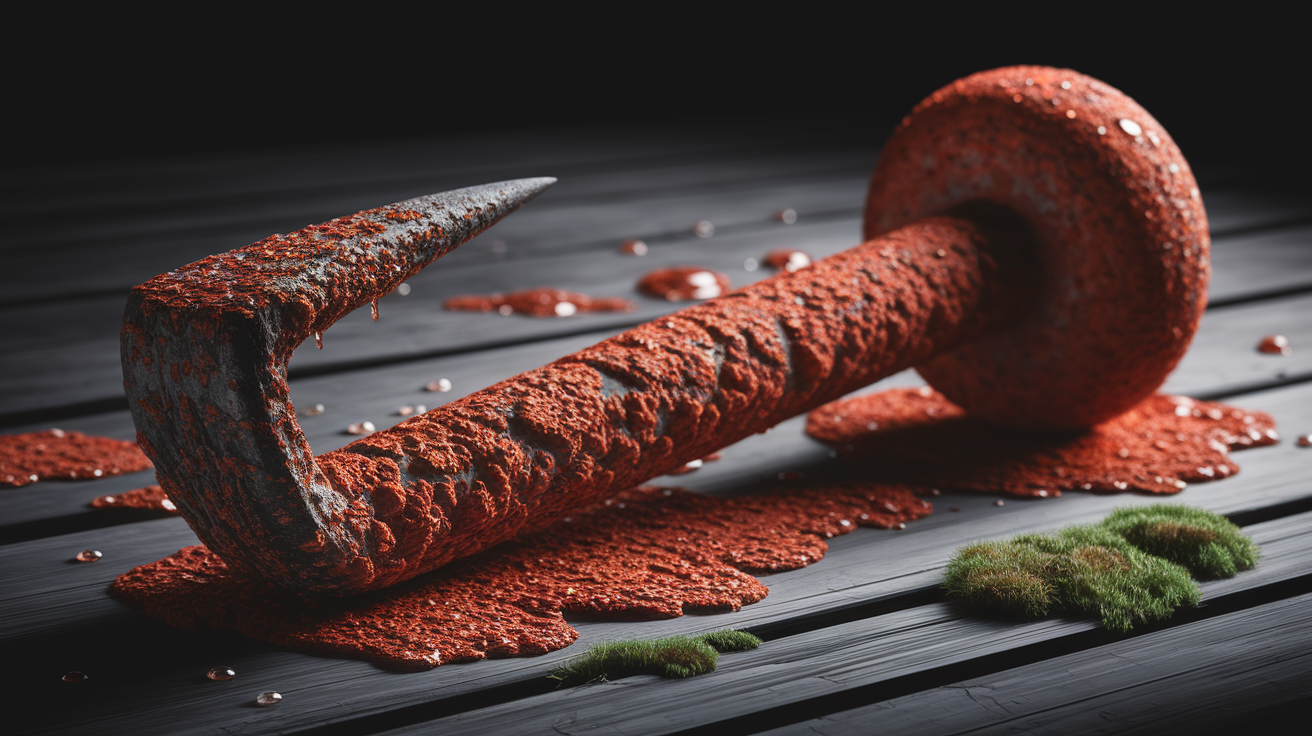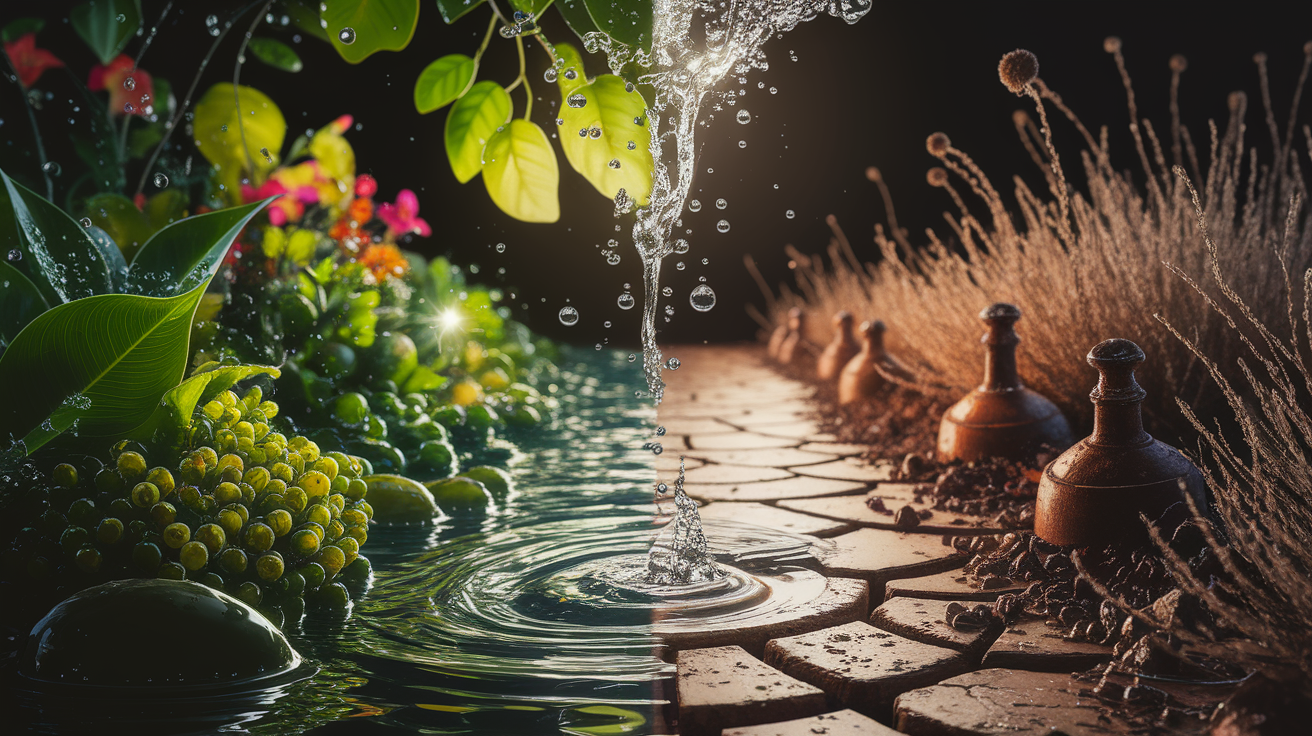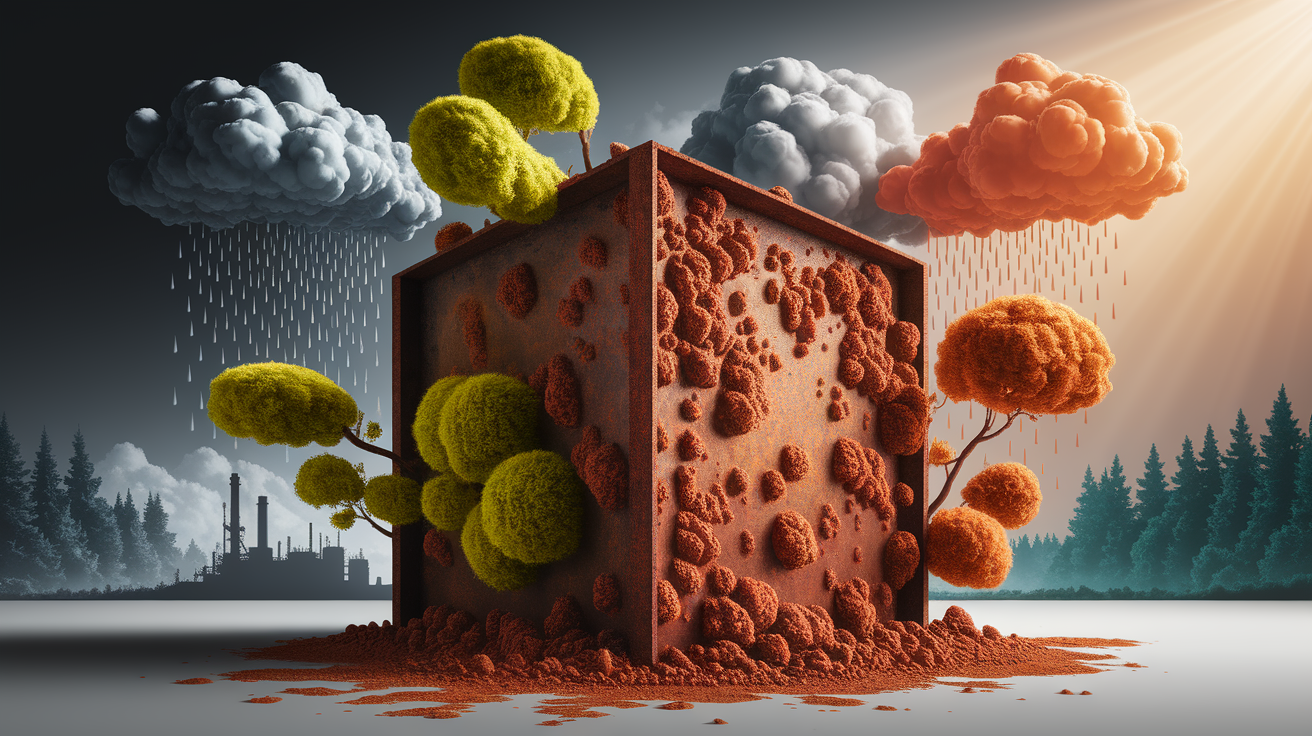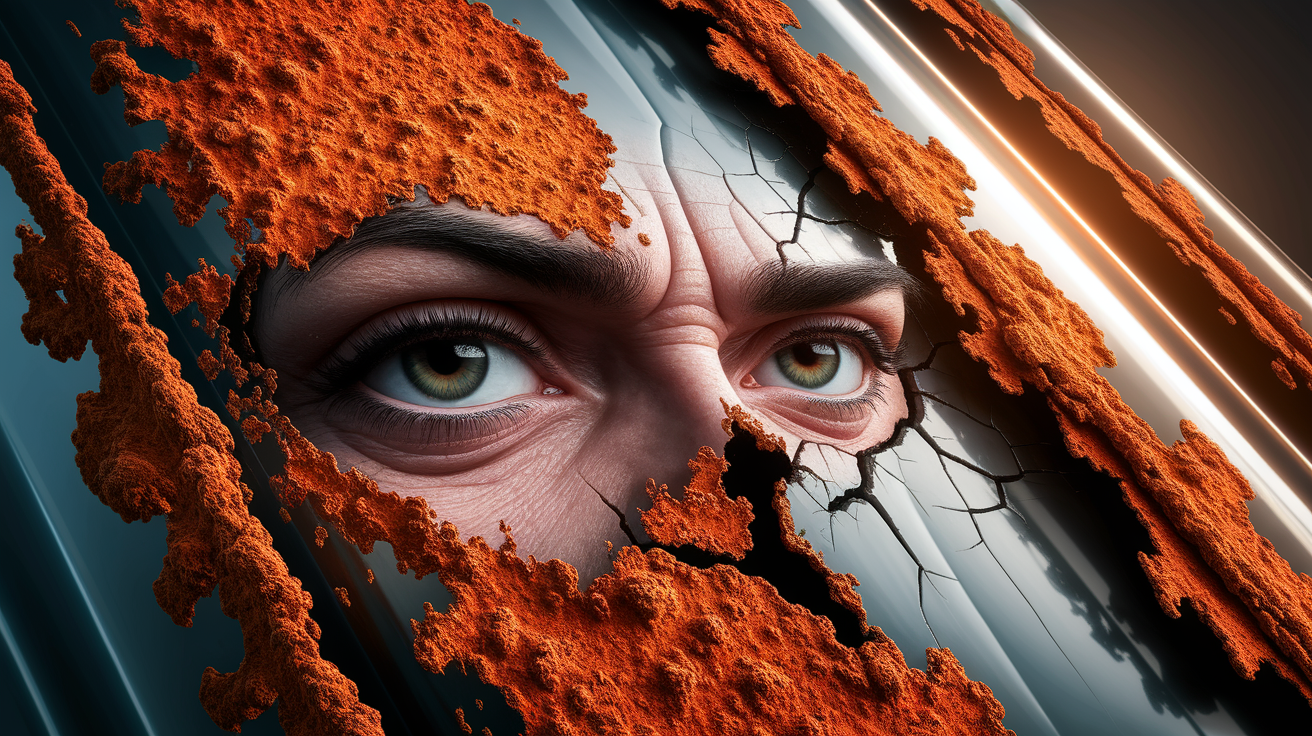Quick Answer: Rust happens when iron or steel reacts with oxygen and water in a process called oxidation, forming flaky iron oxide. This reaction weakens metal over time, but with the right steps, rust can be slowed or prevented entirely.
Rust in a Nutshell
Rust is the crumbly reddish-brown coating you often see on old nails, railings, or car parts. It’s the visible sign of corrosion. Specifically, rust forms when iron-containing metals, known as ferrous metals, react with oxygen in the presence of moisture. This chemical process changes solid, shiny metal into brittle iron oxide, which can easily break away.

The Oxidation Reaction Behind Rust
At its heart, rusting is a redox reaction—short for “reduction-oxidation.” Here’s what happens:

- Oxidation step: Iron atoms in the metal lose electrons, becoming iron ions (Fe²⁺).
- Reduction step: Oxygen atoms from the air gain those electrons, often producing hydroxide ions in the presence of water.
- These ions and oxygen combine to form iron oxides — the rust we see. Initially, iron(II) oxide forms, and with further oxidation, iron(III) oxide develops.
This is an electrochemical reaction, meaning it involves the movement of electrons from one place to another, like in a small battery. Rust forms where tiny “anode” and “cathode” regions appear on the metal’s surface, setting up a flow of electrons that drives the corrosion process.
Water’s Critical Role
Without water or moisture, rusting slows dramatically. Here’s why water is such a critical player:

- Electrolyte action: Water acts like a roadway for ions, helping electrons move between the oxidizing iron and reducing oxygen.
- Reactant: In the presence of oxygen, water forms hydroxide ions that join with iron ions to make hydrated iron oxides.
- Humidity effects: High humidity means more water molecules in the air, which speeds up rust formation.
This explains why iron rusts faster in salty or damp conditions. Salt water is especially potent because dissolved salts increase water’s ability to carry electrons and ions.
Environmental Factors Speeding Rust
Several environmental conditions can supercharge rusting:

- Salts: Salt increases water’s conductivity, accelerating oxidation — a big problem for coastal structures and ships.
- Acidic rain: Low pH speeds up corrosion by providing more reactive hydrogen ions.
- High temperatures: Heat increases reaction rates, so rust forms faster in warm, humid climates.
- Surface damage: Scratches or pits trap moisture and expose fresh metal, which rusts more quickly.
Metals like copper or stainless steel resist rust better because their surfaces form stable, protective layers, whereas regular steel doesn’t naturally maintain such a barrier.
How Rust Weakens Metal
Rust is more than just an eyesore — it’s destructive:

- Loss of material: Iron oxide is brittle and flakes away, reducing the cross-section of solid metal.
- Structural weakening: Load-bearing parts lose strength, risking mechanical failure.
- Accelerated decay: Once rust starts, exposed new surfaces corrode even faster.
This is why untreated rust can cause dangerous degradation in bridges, pipelines, and vehicles — repairs and replacements can be costly. Industrial corrosion prevention is a major focus in engineering.
Simple Ways to Prevent Rust
Stopping rust means blocking the ingredients it needs or disrupting the reactions:
- Coatings: Apply paint, oil, or plastic layers to keep oxygen and moisture out.
- Galvanization: Cover iron or steel with a zinc coating that corrodes first, sparing the underlying metal.
- Dry storage: Keep tools and metal items in low-humidity environments.
- Rust inhibitors: Use chemicals that slow oxidation when applied to metal surfaces.
- Cathodic protection: Apply an external current to counteract the electrochemical process — common for pipelines and ships.
You can find more practical tips in rust prevention guides that outline proven protective measures.
Rustproof Wrap-Up
Rust forms when iron-containing metals meet oxygen and moisture, triggering a chain of electrochemical reactions that produce iron oxide. While it’s a natural chemical process, environmental factors like salt, acids, and heat can make it happen faster. Thankfully, simple strategies — from coatings to electrical protection — can dramatically slow or stop rust in its tracks. With the right care, your metal structures and tools can stay strong and shiny for years to come.













